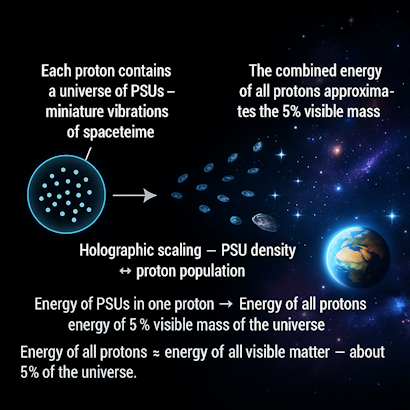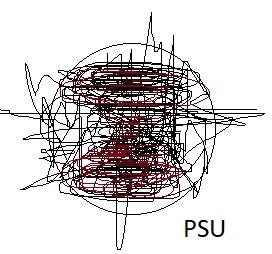
Every origin story begins with a density so deep it seems impossible. Modern cosmology calls it the Big Bang: a hot, expanding plasma that cooled, condensed, and eventually formed stars and galaxies. In this picture, protons emerge after the first moments of the universe, about a millionth of a second after expansion begins. They are products of the early universe.
But there is something weird in how the universe is structured. We need to look at how the universe was created, in how it is explained by Nassim Haramein. Years in development via time and insights in the mind. Haramein showed some relationships in the Universe that suggest how the universe might have scaled up from a single point.

Nassim Haramein approaches the same question of the Big Bang from the opposite direction. Instead of viewing the proton as a late arrival, he asks whether its internal structure might already contain something of the universe itself. Not as a mystical metaphor but as a geometric possibility. His work begins by examining the proton not as an isolated particle, but as a tiny region of curved spacetime filled with an enormous number of Planck-scale oscillations — the smallest meaningful units of the vacuum.


What he calculates is simple in its design and startling in its result. He estimates the vacuum energy density inside a single proton by counting how many Planck Spherical Units would fit within its volume. Then he takes the total number of protons in the observable universe and applies a holographic scaling: a way of comparing the information or curvature inside one system to that of another, larger system using surface-to-volume ratios. When this scaling is applied, the energy associated with all the protons in the universe produces a value close to the measured energy of all visible matter — the 5 percent of the universe made of ordinary atoms. This means the energy inside a single proton after scaling is equal to the energy of all visible matter.
A curious detail sits beside this. Years before the “proton radius puzzle” unsettled mainstream physics, Haramein’s holographic calculation produced a proton radius close to the smaller value later measured using muonic hydrogen. Haramein’s holographic calculation landed close to the smaller proton radius first measured in 2010 and confirmed again in 2013 using muonic hydrogen. The numerical closeness added another layer to the sense of symmetry in his work — the feeling that the geometry inside the proton may be whispering something about the larger order of the universe.
Before turning to the standard cosmological view, it is worth noting the scale involved. Cosmologists estimate that the observable universe contains on the order of 10⁷⁹ protons, with a realistic variation of a factor of a few depending on density, composition, and the size of the observable region. It is not a fixed number, only an estimate tied to what we can currently see. The universe beyond our horizon may contain far more.
In the conventional model, the early universe expanded from a small, dense state governed by general relativity and quantum field theory. Energy cooled into particles; quarks condensed into protons. The mass of visible matter is explained through particle interactions, nuclear synthesis, and the energy–mass balance of the early universe. Nothing in the mainstream view suggests that the structure of a proton determines the mass of the cosmos. The holographic principle exists as an abstract boundary-information concept, not as a direct link between a proton’s interior and the universe itself. It suggests that the universe may express a holographic structure, where the same informational pattern appears repeatedly across different scales — from the very small to the very large. The pattern scales up and down the structure of the universe.
Haramein’s result touches something intuitive — the idea that nature may repeat the same pattern across scales. His scaling law does not replace the Big Bang or alter the chronology of the early universe. But it raises a quiet question: why does the vacuum inside a proton, when examined through holographic ratios, resemble the energy content of everything we see?
The symmetry remains unexplained in standard physics, but it is not meaningless. It points to a deeper coherence in how spacetime distributes curvature and energy, whether in a subatomic particle or a spiral galaxy. The universe may not have been born from a proton, but the proton may still carry a geometry that reflects the universe it inhabits.
Haramein’s contribution sits here: he showed that the vacuum energy density inside a single proton, when scaled holographically across the total number of protons in the observable universe, produces a value close to the total energy of all visible matter — the 5 percent we can observe. The geometry of the small seems to echo the geometry of the whole — not as proof, but as possibility.


